You are here
Status of Women in Nepal
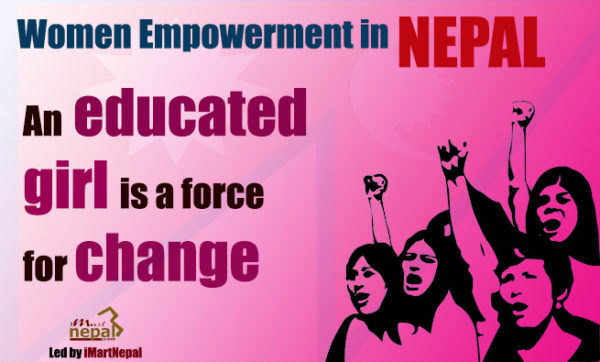
A single statement applicable to all the women in Nepal cannot be made as different groups of women enjoy different status. For instance, Hindu women and the women belonging to indigenous ethnic groups have different rights and suffered from different modes of oppression. The latter groups enjoy more excess and control of researchers. Indigenous women have relatively a higher degree of social mobility, and posses freedom within the private sphere.
They are, however, unable to participate in the public realm due to the dominant ideology of culture being practised. Dissimilarly, Hindu women have no autonomy within private sphere, but enjoy limited positions in the public sphere. Their oppression stems from the concepts of hierarchy, the caste system, traditional thought about food, and the high value of chastity. Although the women belonging to different caste, religion and culture have different status, one thing is certain that they are being oppressed with respect to economic , socio-cultural, political and legal status which cannot be analysed into isolation because each is intrinsically tied to the next. But for the sake of clarity, each category is discussed separately.
Poverty
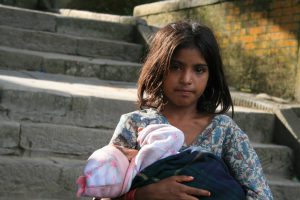
Let’s discuss economic status. The dominant Hindu religion and culture have popularized a belief that women should be dependent on males for income from cradle to grave. Men are considered the sole breadwinners of families; and women are viewed only as domestic maternal. Women’s work is confined to the household. Their responsibilities are thought to include cooking, washing, collecting fuel and firewood, fetching water, engage in agriculture, maternity, and service to males and other family members. Although their work plays a vital role, it is normally left uncounted.
Women involved in wage-labour
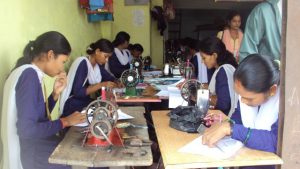
The work load of Nepalese women is immense. They work about 16 hours everyday. Nepalese women are mainly engaged in agriculture work, carpet industries, and wage-labour activities. Furthermore, Nepalese women are compelled to resort to prostitution and to be sold as commercial sex workers. Because of modernization, their workload has certainly increased. Thus, they are now forced to perform triple roles: that of mother,of a traditional wife and of a community participant. Generally Nepalese women have much less access of industrial credit, both an individual and household enterprise levels irrespective of ecological regions, urban or rural areas and ethnic or castes. Complicating economic disparity is the increasing feminization of poverty. To remedy this situation, women would need full economic rights.
Dowry system
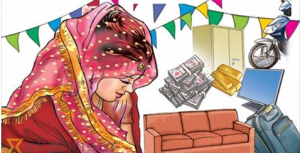
Let’s discuss socio-cultural status. Patriarchy persists as the dominant ideology under Hindu religion and culture. The constitution of the Kingdom of Nepal codified this declaring Nepal a Hindu Kingdom. The religion and its associated culture, norms and values have prevailed for hundred of years and as the result, Hindu women are more oppressed. Because of the great diversity of Nepalese society,the status of women can not be defined by Hinduism alone. These are various indigenous ethnic groups and races. Comparing to Hindu women, indigenous women have relatively better status concerning social mobility, decision making, and sexuality. But the Muslim women have the worst social status among the women belonging to different religions and cultures. The existing dowry system is to be thought to be one of the hindrances for Nepalese women. Many newly married women especially in the Terai are badly tortured by the spouse and other senior family members. The overall literacy rate of women is considerably low; only 24.7 % of Nepalese women are literate. Nepal is one of only two countries in the world where women’s life expectancy is less than that of men.
Women in politics
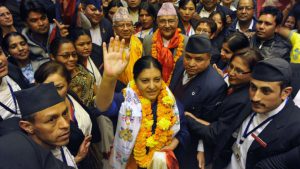
In Nepalese political status, Nepalese women have been involved in the political movement since the fifties but several factors have prevented them from actively participating in local and national politics. These factors include: the dominant ideology of patriarchy, male chauvinism, criminalization of policies, lack of equal property rights, restrictions on women’s mobility, and domination of men in all the political parties. Only few women have gained higher public positions. An encouraging trend is the presence of a lot of elected women representatives in the local bodies. This is due to the provision of seat reservation at this level. However, women lack the power to contribute significantly even within these roles as most of the resources are controlled by their male colleagues.
Status of women at present
To conclude, we can mention that Nepalese women have already opened the door to achieve the destinations of their entire freedom and rights along with their responsibilities. There is no solution to this miserable condition of Nepalese women unless they are adequately and appropriately educated concerning their rights and responsibilities.









Leave a Reply